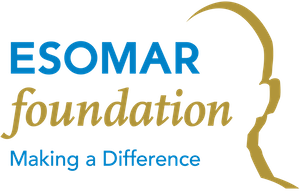
There were several issues that supported the need for research by Venezuela’s second most important TV channel in terms of rating. With this article StatMark explains how market research can help NGOs to measure and engage the audience.
WHY THE RESEARCH WAS DONE?
- The conventional methods applied for measuring audience levels generated, from the station’s point of view, significant doubts regarding reported national TV audience levels. If one takes into consideration current socio-economic conditions, entailing a very restrictive economy in combination with high crime levels, large parts of the population are forced to restrict outdoor entertainment to a minimum. It was therefore thought that indoor entertainment, TV being one of its key sources, should appear more prominently among media tracking studies. The research indeed proved audience levels to be significantly above previously reported available data, i.e. people stayed home much more and more people were watching TV than previously supposed.
- Secondly, but by no means less important, is the socio-political context to which Venezuelan society has been subjected over the past 17 years in which the media sector, by its very nature, has systematically become a key target of surveillance, especially when editorial positions expose the state’s failings to properly address societal issues. Across time, this has led to neutralization of media not aligned to the regime’s line of thought, either by unfriendly takeovers (as has been the case for numerous radio stations and key print media), and more significantly, the closing of what was up to 2007, the country’s oldest and most influential private TV station.
- As of 2013, conditions have become more extreme, social tensions have led to increasingly repressive State actions, with further news curtailment, among other issues now generally known through the world press. Stringent regulation on news broadcasts precluded the media to provide timely and objective information in extreme situations. Under the circumstances, Social Media, among which Twitter held a prominent position, became the most available source of information. Twitter also gathered audience’s dissatisfaction towards conventional media on a whole, as in many cases TV and to a lesser extent all other conventional media, were wrongly perceived as aligned with the government. In response to audience pressure, our client’s started to re-tweet the news gathered by the audience, which somewhat contributed to stem the “bad press” potentially associated to our client’s channel.
THE LEARNINGS
Twitter, which figures as one of the most used social media within the local context, had been increasingly incorporated by our client’s Station as a means to gauge programming satisfaction and engagement, as well as to measure program content balance among what, until very recently, was described as an ideologically split audience. Prior to the research we conducted, client analyzed Social Media content in house in a non-systematic fashion.
THE RESEARCH
Obviously, one of the key objectives needed to be addressed on behalf of our client was the station’s real position in terms of “hard” metrics (audience levels, share of audience and advertising investment value in terms of rating points). Nevertheless, what the client felt lacking in traditional media tracking studies was the understanding of the “whys” and “hows” of the audience- media interaction, for example with basic questions such as: reasons for viewing a program, reasons for viewing a specific station, other activities being conducted whilst watching TV, among several other.
The research involved the application systematic telephone interviews from 6 am until 10 pm, seven days a week, across 6 main cities, over a two-month period. By applying automatic speech recognition (ASR) with intelligent dialogue user interface, in lieu of conventional CATI, data collection became extremely efficient, thus achieving over 50 thousand interviews per month. Such sample sizes, in themselves being statistically representative of any population, provided the flexibility to incorporate different sets of open ended questions.
Program – specific social media content was gathered in tandem with the survey’s “soft” analytics. Combined findings supported the measurement of audience engagement, involving Cognitive, Emotional and Attitudinal dimensions regarding Program and Station Image and Satisfaction.
IMPLICATIONS OF THE FINDINGS
For NGO’s, the application of automatic speech recognition (ASR) with intelligent dialogue user interface, in tandem with issue-specific social media content analysis, provides the user with Big Data information support gathered at significantly lower CPI levels. Based on the immediacy of the information required by the user, samples can be adjusted to time sensitive needs. Nevertheless, samples gathered through these methods will be, by definition, significantly more robust than if gathered through conventional means.
The results gathered from open-ended responses at such a large scale, provide answers that are both qualitative and quantitative in nature. If in prior research projects, open-ended responses required prior coding, with the Cognitive Computing approach applied to our project, identification of similarities and differences, as well as quantitative ranking and interpretation of opinions and feelings, was achieved on a massive scale in a very short timeframe. Massive qualitative opinion processing done this way, becomes, what we termed in our presentation of “quantilative” nature, merging qualitative with quantitative research into one.
As can be ascertained from the challenging context in which our research was conducted, the importance of Social Media content analysis cannot be underestimated, it being the up-to-date, disrupting and disruptive means of communications within a media controlled environment. Nevertheless, there still being a significant population sector which access conventional media with various degrees of engagement, but who not necessarily are intensive Social Media users. This segment also needs to be addressed. Thus, Social Media users’ opinions, whilst representative in themselves, need to be supplemented with other sources of information to confirm whether their opinions are or not in line with those of the overall population.
This research showing the added value of market research for our society was conducted by StatMark, a multidisciplinary team of research consultants, experts on market and opinion Research within Latin America.
